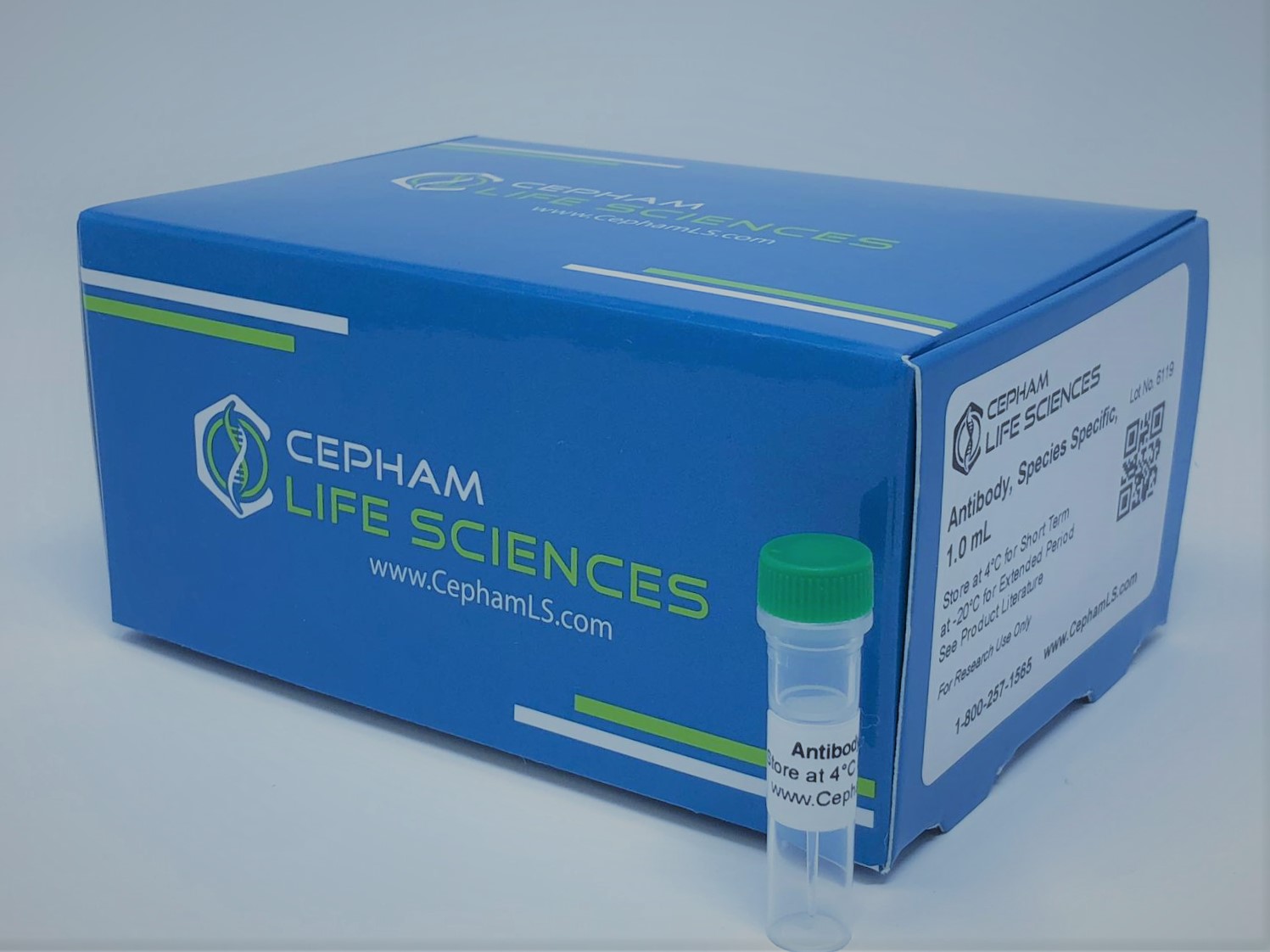Description
Aliases
HIST1H3J; H3/j; H3FJ; Histone H3.1; Histone H3/a; Histone H3/b; Histone H3/c; Histone H3/d; Histone H3/f; Histone H3/h; Histone H3/I; HistoneH3/j; Histone H3/k; Histone H3/l; HIST3H3;
Antibody Type
Polyclonal Antibody
Uniprot ID
Gene ID: 8290 Swiss Prot: Q16695
Immunogen
A synthetic methylated peptide corresponding to residues surrounding K36 of human histone H3
Raised In
Rabbit
Species Reactivity
Human Mouse Rat
Tested Applications
WB IHC IF Recommended dilution: WB 1:500– 1:2000
IF 1:50 – 1:200
Background / Function
Modulation of chromatin structure plays an important role in the regulation of transcription in eukaryotes. The nucleosome, made up of DNA wound around eight core histone proteins (two each of H2A, H2B, H3, and H4), is the primary building block of chromatin (1). The amino-terminal tails of core histones undergo various post-translational modifications, including acetylation, phosphorylation, methylation, and ubiquitination (2-5). These modifications occur in response to various stimuli and have a direct effect on the accessibility of chromatin to transcription factors and, therefore, gene expression (6). In most species, histone H2B is primarily acetylated at Lys5, 12, 15, and 20 (4,7). Histone H3 is primarily acetylated at Lys9, 14, 18, 23, 27, and 56. Acetylation of H3 at Lys9 appears to have a dominant role in histone deposition and chromatin assembly in some organisms (2,3). Phosphorylation at Ser10, Ser28, and Thr11 of histone H3 is tightly correlated with chromosome condensation during both mitosis and meiosis (8-10). Phosphorylation at Thr3 of histone H3 is highly conserved among many species and is catalyzed by the kinase haspin. Immunostaining with phospho-specific antibodies in mammalian cells reveals mitotic phosphorylation at Thr3 of H3 in prophase and its dephosphorylation during anaphase (11).1. Workman, J.L. and Kingston, R.E. (1998) Annu Rev Biochem 67, 545-79.2. Hansen, J.C. et al. (1998) Biochemistry 37, 17637-41.3. Strahl, B.D. and Allis, C.D. (2000) Nature 403, 41-5.4. Cheung, P. et al. (2000) Cell 103, 263-71.5. Bernstein, B.E. and Schreiber, S.L. (2002) Chem Biol 9, 1167-73.6. Jaskelioff, M. and Peterson, C.L. (2003) Nat Cell Biol 5, 395-9.7. Thorne, A.W. et al. (1990) Eur J Biochem 193, 701-13.8. Hendzel, M.J. et al. (1997) Chromosoma 106, 348-60.9. Goto, H. et al. (1999) J Biol Chem 274, 25543-9.10. Preuss, U. et al. (2003) Nucleic Acids Res 31, 878-85.11. Dai, J. et al. (2005) Genes Dev 19, 472-88.
Conjugate
Unconjugated
Storage Buffer
Buffer: PBS with 0.02% sodium azide, 50% glycerol, pH7.3.
Form
liquid
Storage
Shipped at 4°C. Upon delivery aliquot and store at -20°C or -80°C. Avoid repeated freeze.
Purity
Antigen Affinity Purified
Modification
K36me2
Additional information
| Size | 100?l |
|---|


